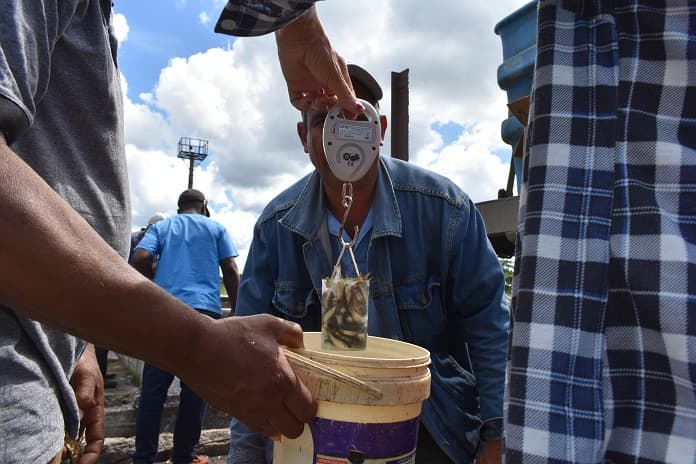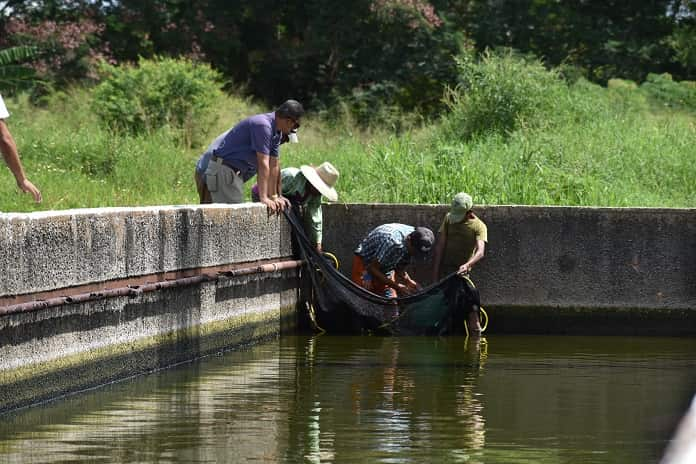
"La Escondida," one of the reservoirs of the Agriculture system, in areas of the Melanio Ortiz Agricultural Production Cooperative (CPA), will be the destiny of the first fry sowing from the breeding center managed by the Urban Farm base business unit, located in the ponds of the old Makenaf complex, in Jobabo.
Jobabo, Las Tunas.- With an estimated survival between 45 and 50 percent of the 150 thousand Labeo larvae (a type of cyprinid) and Tench, planted around a month ago, it is expected that the fish can be harvested by February at the latest, prioritizing local consumption.
Yunior Pedraja Pérez and Silda Dragoní, specialists from the Provincial Delegation of Agriculture and the Fishing Company (PESCATUN), respectively, collaborated in the capture, transfer, and advice. The experts explained that the potential and exploitation of the project goes far beyond that particular process, but it depends on completing the infrastructure conditioning work.
Now, the priority must focus on providing the complex with the necessary conditions, which include sealing the reservoirs well, having guarantees for water supply, and preparing the personnel that will be in charge of the facilities, a deadline that extends until February, taking into account the cessation of larvae supply in the next months.

A complicated issue, which occupies those responsible for the project, is to stabilize the water supply for ponds, whose demand is extremely high and can’t be supplied by the only available pumping system, which comes from the Jobabo River through very deteriorated pipes.
Precisely, the fry of this first sowing had to be taken out before 45 days, because it was impossible to guarantee the required volume of the liquid in recent days, and there was a risk of lowering the survival rate.
This was one of the issues addressed during a recent visit from the main authorities of the municipality to the breeding center. The solution will depend on some investments much more focused on this initiative, both in the sources of supply and infrastructure.
The deposits “were not filled at the levels we wanted and the sun is constant, generating strong evaporation, which, in turn, reduces oxygen and increases the pH, which infringes against the survival of the larvae. Water is needed, constant water,” Iryas Arena Buitrago, director of the Urban Farm, says.
More than half a hundred such tanks can be used in the future for the sowing of larvae and fry development, even for large-scale fishing production.
“This situation occurs with only three ponds in exploitation and is complex. Imagine if we had 20 or 30 or the totality of those here,” a worker warns.
The aquaculture project in the once Makenaf Factory promises, it has the potential to be one of the largest production enclaves in the province, but there is no doubt that, as an experiment, this initial phase made it very clear that investment and a lot of effort are vital for its sustainability.





